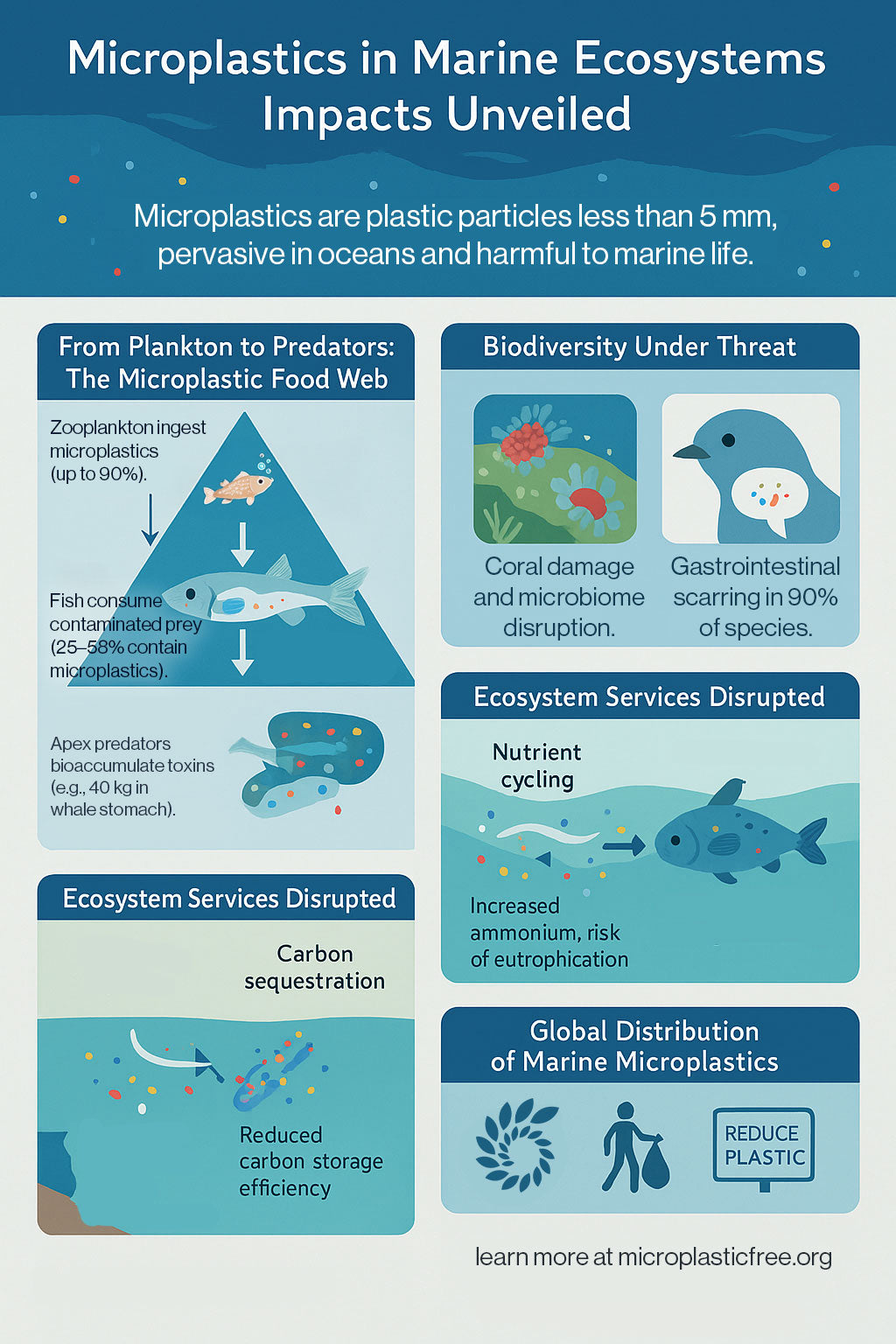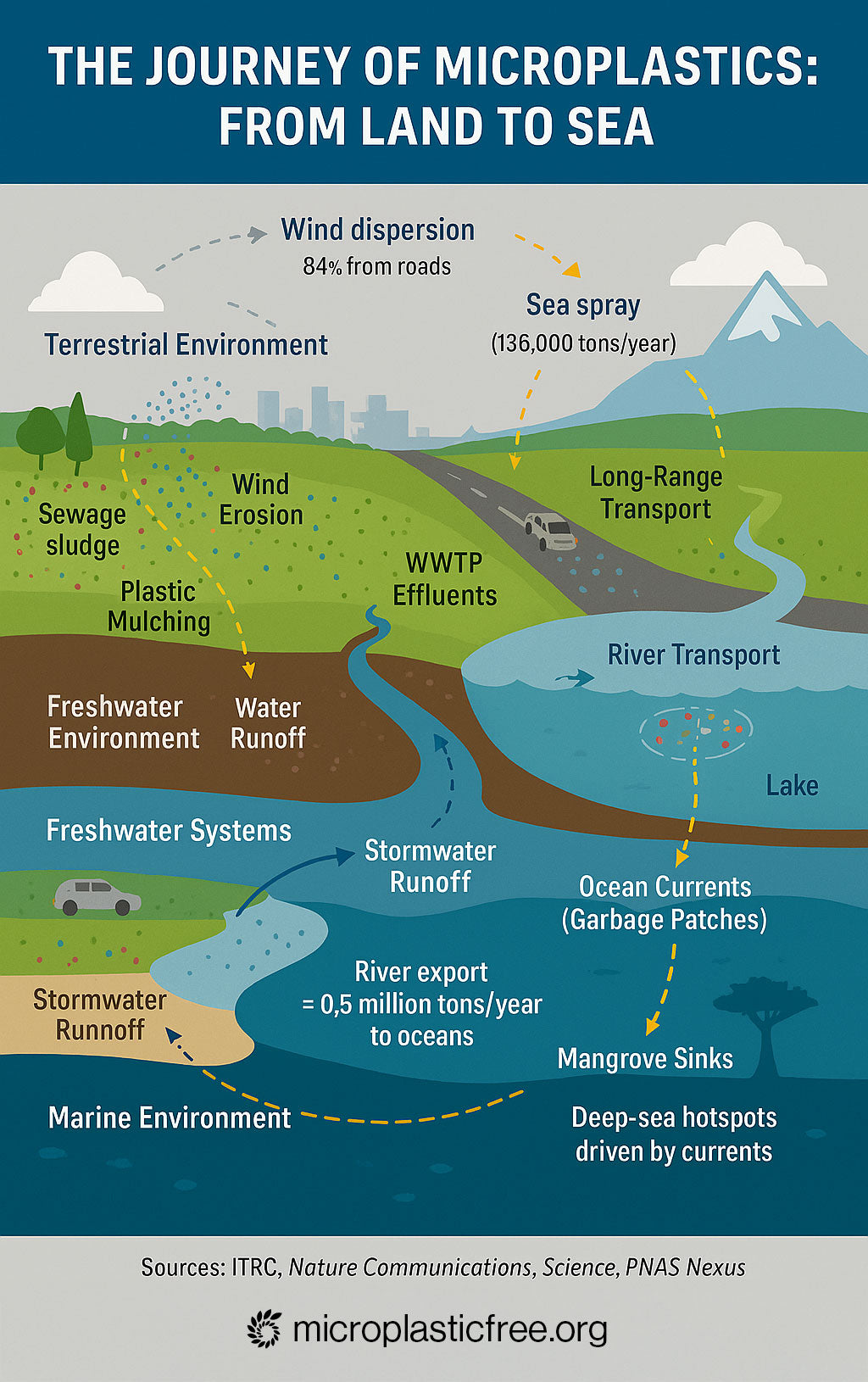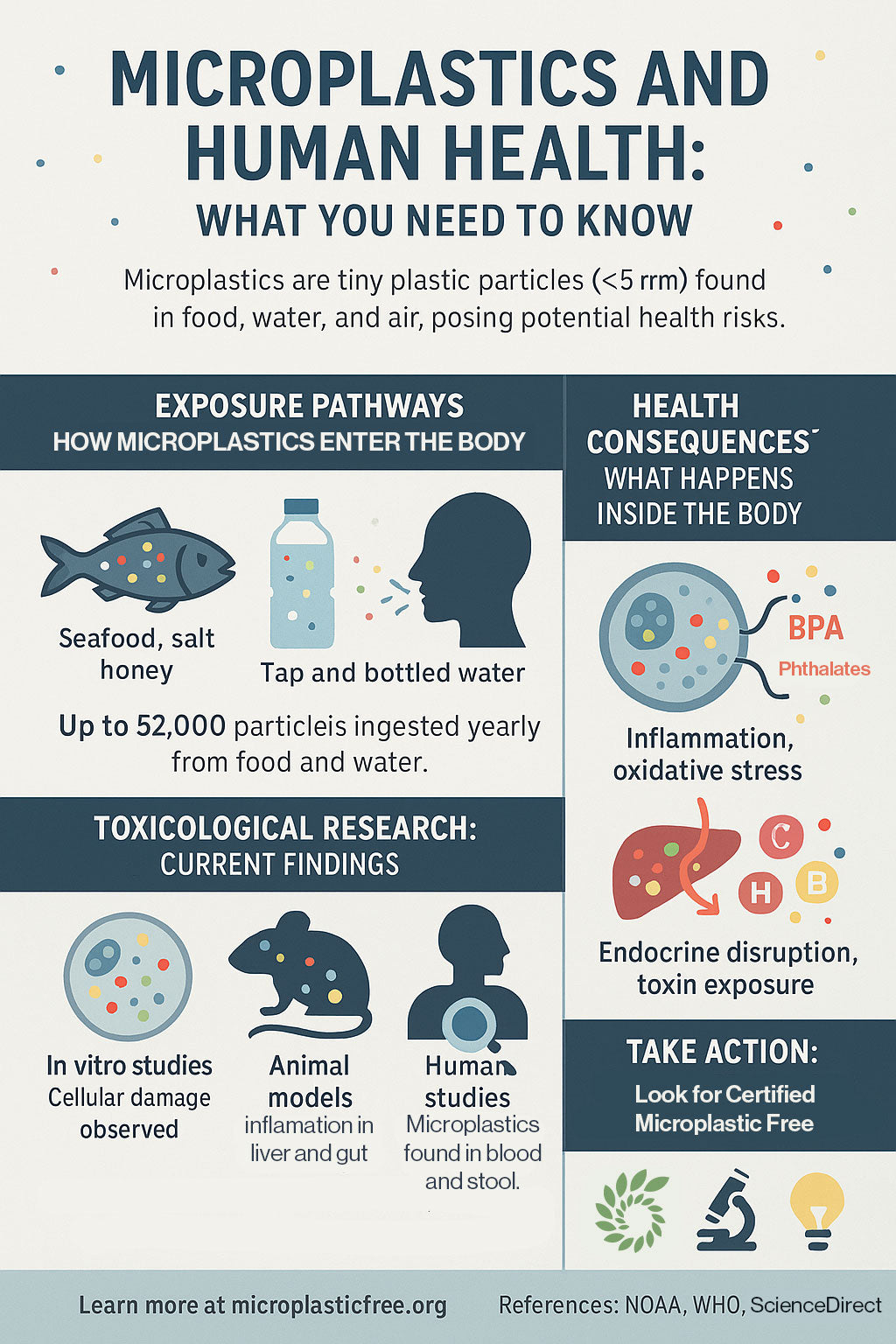Introduction
Microplastics, defined by the U.S. National Oceanic and Atmospheric Administration (NOAA) as plastic particles less than 5 mm in diameter, have emerged as a pervasive pollutant in marine ecosystems. These tiny particles originate from primary sources, such as microbeads in cosmetics, and the secondary breakdown of larger plastics, like bottles and bags. Once in the ocean, microplastics are ingested by a wide range of marine life, from microscopic plankton to massive whales, causing physical harm, chemical toxicity, and far-reaching ecological disruptions. This article delves into the detailed impacts of microplastics on marine biodiversity and ecosystem services, drawing on recent scientific research to highlight the urgency of addressing this growing environmental crisis.
Effects on Marine Life
The infiltration of microplastics into marine food webs begins at the base with zooplankton, such as copepods. Laboratory studies have demonstrated that up to 90% of zooplankton can ingest microplastics, leading to physical blockages, reduced feeding efficiency, and nutrient dilution (Botterell et al., 2019). These effects impair growth and reproduction, as evidenced by research showing significant declines in copepod fitness when exposed to microplastic concentrations (Cole et al., 2015).
Filter feeders, such as mussels and oysters, are equally vulnerable, ingesting microplastics directly from the water column. Studies have detected concentrations ranging from 0.36 to 0.47 microplastic particles per gram of tissue in wild populations (Van Cauwenberghe & Janssen, 2014). These particles cause physical blockages in digestive tracts and act as vectors for pollutants, transferring toxic chemicals like polychlorinated biphenyls (PCBs) into the organisms.
As microplastics ascend the food chain, they bioaccumulate in larger species. Fish, including commercially important species like the European seabass, consume contaminated prey, with global studies reporting microplastics in 25–58% of sampled individuals (Barboza et al., 2020). At the top of the food web, apex predators such as orcas and other marine mammals exhibit significant bioaccumulation. A striking example is a stranded whale found with up to 40 kg of plastic in its stomach, underscoring the scale of this issue (Fauna & Flora, 2024).
Beyond physical impacts, microplastics serve as carriers for persistent organic pollutants and heavy metals, which adsorb to their surfaces. These chemicals biomagnify through the food chain, increasing toxicity at higher trophic levels and posing significant health risks (Rochman et al., 2013).
Summary of Impacts Across Trophic Levels
| Trophic Level | Ingestion Rate | Impacts |
|---|---|---|
| Plankton | Up to 90% | Reduced growth, reproduction |
| Filter Feeders | 0.36–0.47 particles/g | Blockages, toxin transfer |
| Fish | 25–58% | Tissue damage, oxidative stress |
| Apex Predators | Up to 40 kg | High toxin levels, biomagnification |
Impacts on Biodiversity
Corals, foundational to reef ecosystems, face severe threats from microplastics. Research on species like Corallium rubrum has linked the ingestion of polypropylene particles to tissue damage and disruptions in coral microbiomes (Corinaldesi et al., 2021). These effects can lead to coral mortality, reducing habitat availability for over 25% of marine fish species that depend on reefs for survival (NOAA Fisheries).
Seabirds, another critical group, are heavily affected, with microplastics detected in 90% of sampled species worldwide. Ingestion leads to a condition termed "plasticosis," characterized by gastrointestinal scarring and impaired nutrient absorption, which can reduce reproductive success and survival rates (Wilcox et al., 2015).
The cumulative impact on these key species triggers broader biodiversity losses. The decline of filter feeders, for instance, reduces prey availability for higher trophic levels, while coral reef degradation erodes biodiversity hotspots. In regions with elevated microplastic concentrations, biodiversity indices have shown significant declines, reflecting disruptions to food webs and ecosystem stability (MDPI Study, 2023).
Disruptions to Ecosystem Services
Microplastics interfere with nutrient cycling by altering microbial communities in marine sediments. A study demonstrated that microplastic exposure shifts microbial species composition, increasing ammonium levels and raising the risk of eutrophication—an over-enrichment of nutrients that can lead to harmful algal blooms (Seeley et al., 2020). This disruption affects nutrient availability for primary producers and cascades through the food web.
Another critical ecosystem service impacted is carbon sequestration. Marine snow—organic aggregates that sink carbon to the seafloor—plays a vital role in the ocean’s carbon cycle. Research has shown that microplastics integrate into marine snow, accelerating sinking rates and depositing up to 1.9 million pieces per square meter in deep-sea sediments (Galgani et al., 2022). This alteration may reduce the efficiency of carbon storage, potentially exacerbating climate change by limiting the ocean’s capacity to act as a carbon sink (Mongabay, 2023).
Unexpected Ecological Interactions
A notable phenomenon associated with microplastics is the "plastisphere"—distinct microbial communities that colonize plastic surfaces in the ocean. These biofilms differ markedly from those in surrounding seawater and may enhance the growth of specific microbes, such as nitrogen-fixing bacteria (ScienceDirect Review, 2020). While this could create new ecological niches, it also poses risks by potentially disrupting natural nutrient balances, with implications for ecosystem function that remain poorly understood.
Conclusion
Microplastics represent a multifaceted threat to marine ecosystems, with profound impacts on organisms across all trophic levels, from plankton to apex predators. They reduce biodiversity by harming key species and disrupting food webs, while also impairing vital ecosystem services like nutrient cycling and carbon sequestration. The emergence of the plastisphere further complicates these dynamics, introducing unpredictable ecological interactions. Addressing this crisis demands urgent action, including reducing plastic production, enhancing waste management systems, and investing in research to develop effective mitigation strategies.
References
- NOAA: Microplastics Overview
- Botterell et al., 2019. "Microplastic ingestion by zooplankton."
- Cole et al., 2015. "Microplastics as contaminants in the marine environment."
- Van Cauwenberghe & Janssen, 2014. "Microplastics in bivalves."
- Barboza et al., 2020. "Microplastics in wild fish."
- Fauna & Flora, 2024. "Marine plastic pollution."
- Rochman et al., 2013. "Microplastics as vectors for pollutants."
- Corinaldesi et al., 2021. "Microplastics and coral health."
- NOAA Fisheries: Coral Reef Ecosystems
- Wilcox et al., 2015. "Plastic ingestion by seabirds."
- MDPI Study, 2023. "Biodiversity impacts of microplastics."
- Seeley et al., 2020. "Microplastics and nutrient cycling."
- Galgani et al., 2022. "Microplastics in marine snow."
- Mongabay, 2023. "Ocean carbon storage."
- ScienceDirect Review, 2020. "The plastisphere."



Leave a comment
This site is protected by hCaptcha and the hCaptcha Privacy Policy and Terms of Service apply.